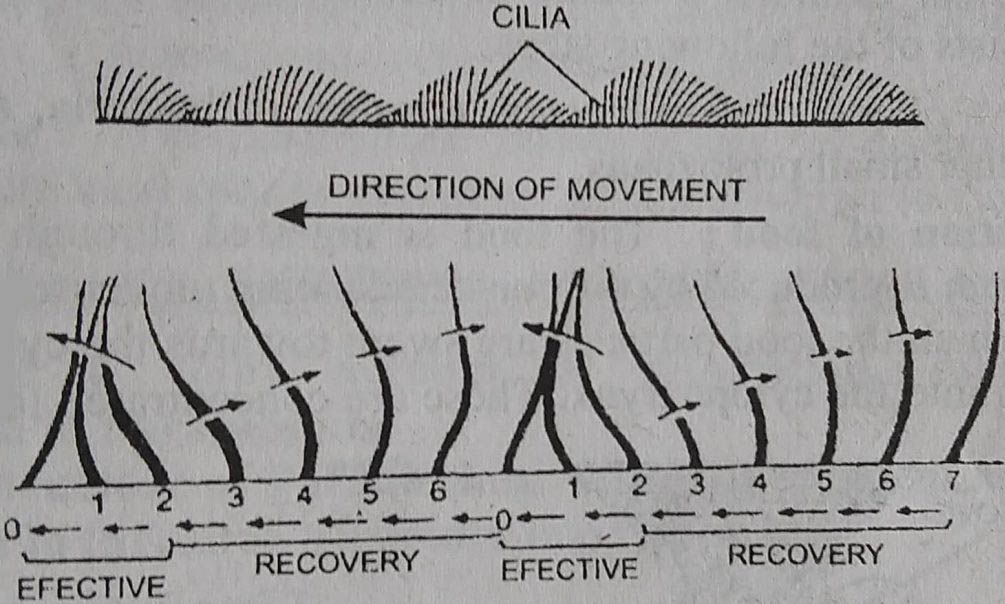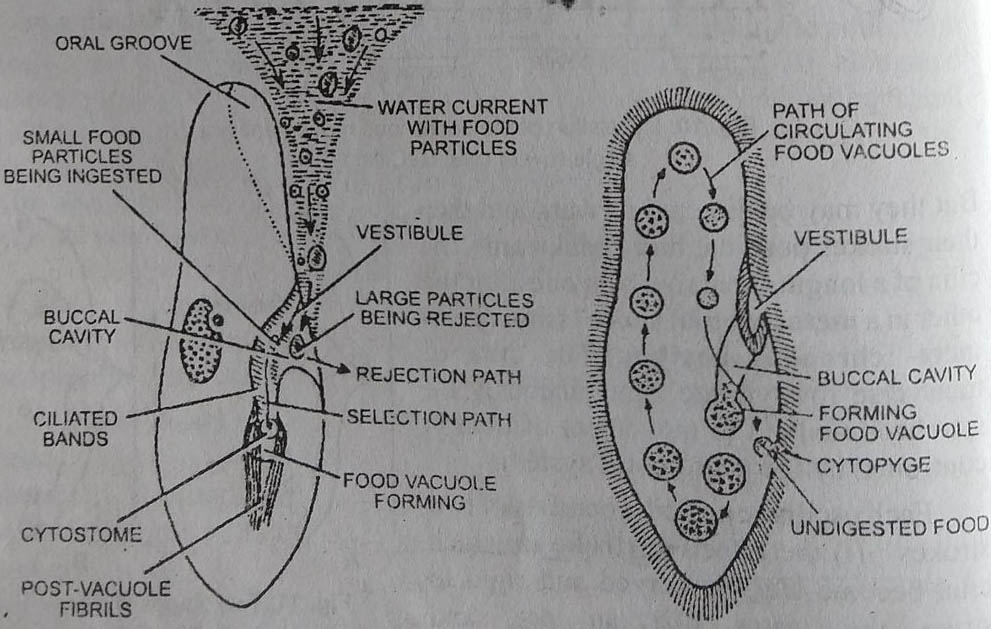Q. 2. Give an account of nutrition and cyclosis in Paramecium.
Or
Give an account of the feeding mechanism and the process of digestion in paramecium.
Ans.2. 1. Locomotion in Paramecium
Paramecium progresses by the following two methods:
1. Ciliary movement: Cilia are main locomotory organelles in Paramecium. These are fine, hair-like protoplasmic processes all over the body. These are inclined backward and their beating drives the body forward.

But they may be directed forward and then their strokes push the body backward. The cilia of a longitudinal row beat one after the other in a metachronial succession or in a metachronous rhythm. The cilia of transverse row vibrate simultaneously i.e. synchronously. The movement of cilia is controlled by the neuromotor system.

Each oscillation of cilia consists of two strokes :
(i) the effective stroke in which cilia become slightly curved and rigid to strike the water like an ore, and
(ii) recovery stroke in which cilia remain fixed to offer least resistance to the current.
The cilia beat somewhat towards the right side. As a result the body Paramecium rotates spirally slightly towards the left. Secondly, the cilia oral groove strike more vigorously and obliquely.

2. Body contortions : Paramecium can pass through a passage narrower than its body by the contraction and twisting of the body. After this. the body assumes the normal form.
2. Nutrition
Paramecium exihibits holozoic or animal-like mode of nutrition. The process consists of the following steps:
1. Food: Food of Paramecium consists of bacteria, algae, diatoms. yeasts and other small protozoans.
2. Ingestion of food: The food is ingested through cytostome. A current of water is produced by the constant lashing movement of cilia of oral – groove, by which the food particles are swept towards the cytostome and are carried down into the cytopharynx.

These are concentrated into a ball by the movement of penniculus and quadrulus. The ball is finally nipped off from the end of cytopharynx as a food vacuole.
3. Digestion and assimilation: The food vacuoles thus formed are swept by the streaming movement of endoplasm into the body and are carried along a definite course. This rotatory streaming movement is known as cyclosis. The food vacuoles starting from cytopharynx are carried firstly behind, then forward to the dorsal or aboral surface and finally backward down to the oral surface.
The food is digested inside the food vacuole during its journey. The food vacuole is first acidic and alkaline later on. The proteins, carbohydrates and fats are digested. The digested food is assimilated by the endoplasm during cyclosis.
4. Cyclosis : Food vacuoles are circulated in the body by the streaming endoplasm along a definite path. This streaming movement is called cyclosis. Several food vacuoles may be seen circulating in the endoplasm under microscope. The path followed by food vacuoles is :
From cytopharynx → Down to posterior end → Upward to become dorsal →
Anterior part → Backward → Cytopyge
5. Egestion : The undigested faecal matter is discharged outside through a definite anal spot or cytopyge situated posterior to the cytostome.
BSc 1st Year Lower Non-chordates Paramecium Sample Model Practice Question Answer Papers